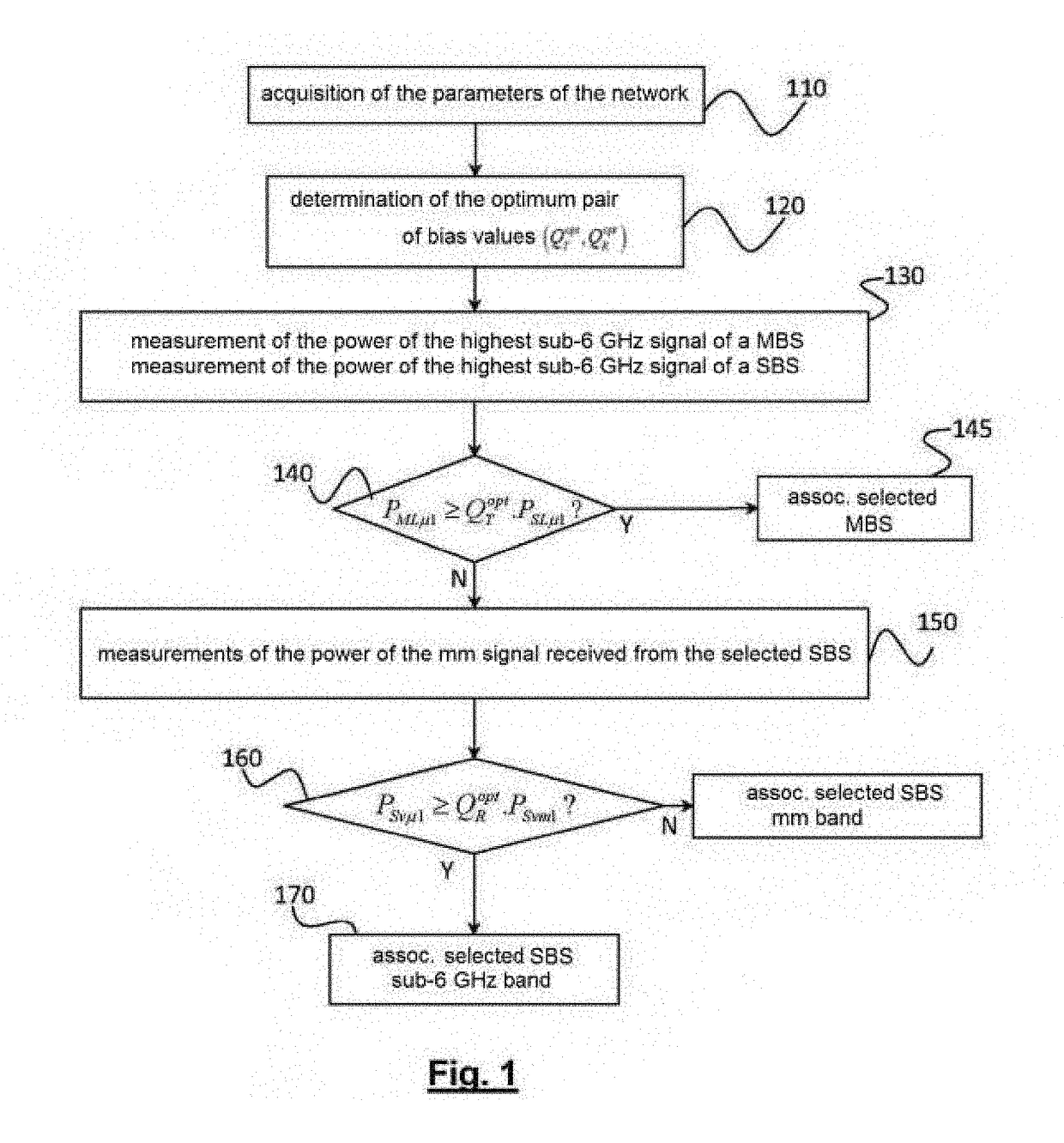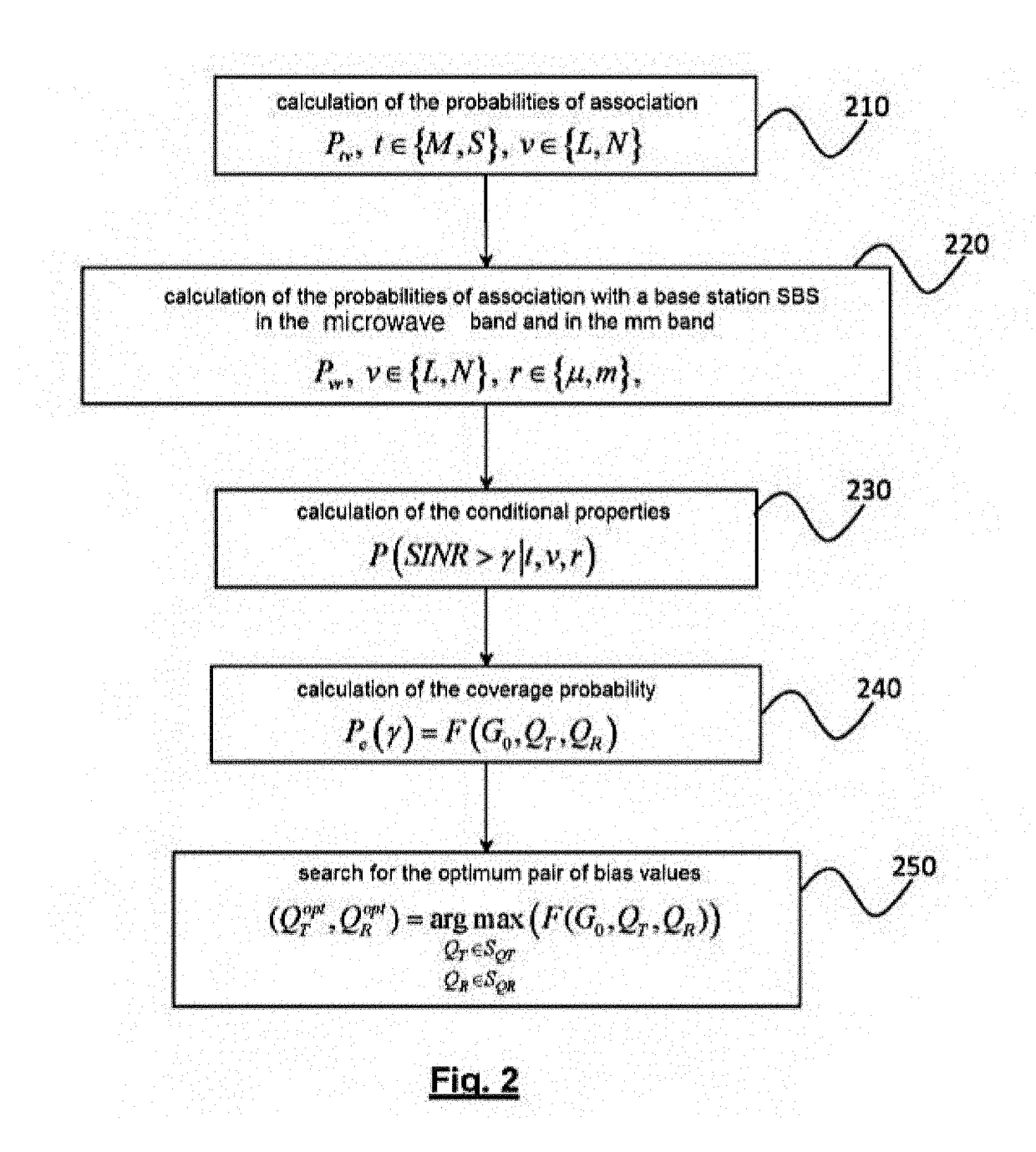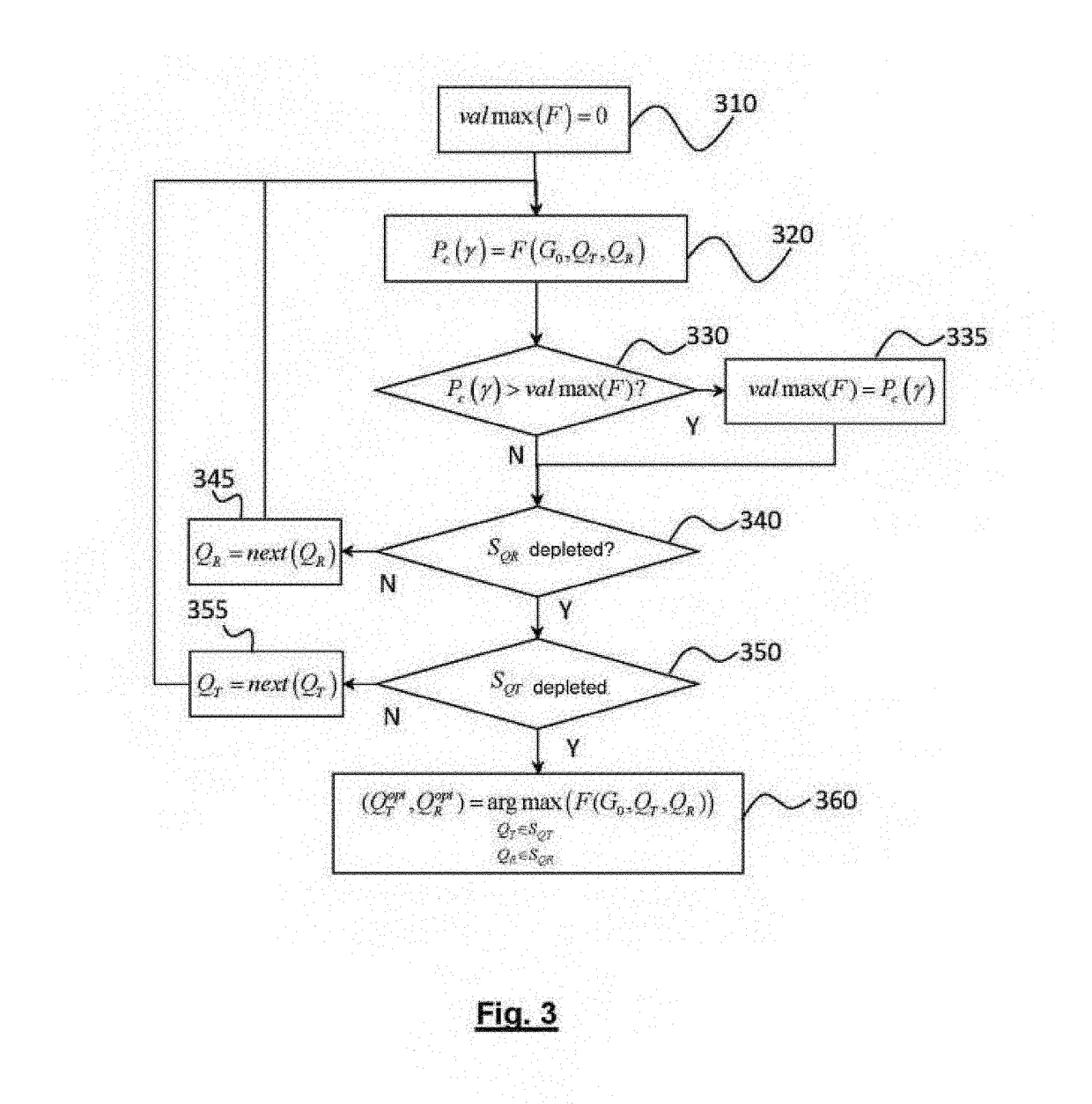Method for distributing a load in a multi radio access technology heterogeneous network
a multi-radio access technology and heterogeneous network technology, applied in the direction of digital transmission, data switching network, electrical apparatus, etc., can solve the problem of complex traffic load distribution strategy between mbss and sbss
- Summary
- Abstract
- Description
- Claims
- Application Information
AI Technical Summary
Benefits of technology
Problems solved by technology
Method used
Image
Examples
Embodiment Construction
[0030]It shall be considered in what follows a multi radio access technology heterogeneous cellular network. Without loss of generality, it shall be supposed that the network comprises two types of cells: macrocells (served by base stations MBSs) operating in the sub-6 GHz band (i.e. from 0.7 to 6 GHz) and minicells, also referred to as small cells, (served by base stations SBSs) operating both in this sub-6 GHz band (or in a band that is not separate from the latter) and in the millimeter band (25 to 300 GHz).
[0031]The principle at the base of the invention is to use a first bias value, QT, in order to select the cell tier (macrocell or minicell) that will serve the terminal and a second bias value, QR, in order to select the radio access technology in the case where the terminal is located in a coverage zone of a minicell.
[0032]More precisely, FIG. 1 diagrammatically shows the flowchart of a method for distributing loads in a multi technology heterogeneous cellular network, accord...
PUM
 Login to View More
Login to View More Abstract
Description
Claims
Application Information
 Login to View More
Login to View More - R&D
- Intellectual Property
- Life Sciences
- Materials
- Tech Scout
- Unparalleled Data Quality
- Higher Quality Content
- 60% Fewer Hallucinations
Browse by: Latest US Patents, China's latest patents, Technical Efficacy Thesaurus, Application Domain, Technology Topic, Popular Technical Reports.
© 2025 PatSnap. All rights reserved.Legal|Privacy policy|Modern Slavery Act Transparency Statement|Sitemap|About US| Contact US: help@patsnap.com



